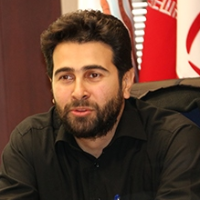Comparison the efficiency of AquaCrop and Saltmed model in Simulation of wheat yield and Soil Salinity in Hamidyeh Khouzestan
Because of evaluating and measurement of different irrigation management and identifying soil salinity consumes more time with high cost, so applying models can overcome these problems and could be used in different irrigation scenarios. Variation Crop models are an appropriate tool for investigating irrigation management and their effect on plant production. The purpose of this study was to evaluate the efficiency of two models including AquaCrop and Saltmed for simulation of yield and soil salinity variation. The accuracy of the results of the simulation models depends on the accuracy of the required data of the model and if the measurement and determination of the input data is accurate, then the applicability model will be in different conditions after calibration and validation. For applying Aquacrop and Saltmed models, having crop growth stages, root effective depth, sowing and havest date, harvest index, crop coefficients in different growth stages, duration of wheat phonological growth stages, initial soil salinity in different layers and some irrigation data including depth and time of water application are necessary. In this regard, the two models including AquaCrop and Saltmed are among the functional models that have high ability and efficiency to simulate plant yield and soil salinity performance have been investigated.
This research was conducted in the Ramseh region of Hamidieh, Khuzestan, in latitude and longitude 47 degrees 41 minutes and 33 degrees and 4 minutes, respectively. In this regard, three pilots of 10 hectares were selected and in each of these parts three pilot trials with an area of 2000 square meters were considered for evaluation and measurement. In the first year, using traditional irrigation management of farmers and using the initial salinity levels, soil physical and chemical characteristics compared to the simulation using two models including Aquacrop and Saltmed model. Saltmed and Aquacrop Models can simulate crop yield, Biomass and soil moisture variation in saline and non saline condition. In this investigation Aquacrop version No. 4(2012) and Saltmed No. 3-04-02(2015) has been used for crop production and soil salinity simulation. During irrigation season reference evapotranspiration has been determined using climatic data of Ahvaz Synoptic station. Data gathering including minimum and maximum temperature, minimum and maximum relative humidity, precipitation, sunshine hours and wind speed. Also, during the growing season, the volume of irrigation water, irrigation hours, water use efficiency and root depth were determined. At the end of the growing season, direct measurement of selected farms in three replications was carried out to determine the wheat grain yield and biomass along with soil moisture changes in soil profile. According to the measured data, two models of Saltmed and Aquacrop were calibrated for the first year of cultivation. Results of calibration of the first year were evaluated for verifying the results of the two models in the second year. The standard error (SE), Root mean square error (RMSE), Normalized root mean square error (NRMSE), correlation coefficient (R2), mean bias error (MBE), and model efficiency (EF) were used to determine the accuracy of the models.
The results of the first year showed that the normalized error of root mean square index for grain yield and biomass values in the AquaCrop model were 4 and 5%, respectively, and these values for the Saltmed model, were 8 and 9%, respectively. This statistical index for simulation of soil salinity with Saltmed model was about 18% and in AquaCrop model was 53%. Therefore, the Saltmed model is more consistent with the measured data of soil salinity. Also, the results of the second year that were used for validation showed that, the normalized error of root mean square index for yield and biomass in the AquaCrop model was 4% and 4% respectively, and these corresponding values for Saltmed model were 22 and 14% respectively. Also, simulated of soil salinity results in the second year with Saltmed model showed that this model with normalized error of mean square error(26%) was more accurate for soil salinity simulation than AquaCrop model with normalized error of mean square error equal to 47%; therefore, the AquaCrop model has a better performance than Saltmed model for yield simulation. Also the performance of Saltmed model has high efficiency and accuracy in simulating soil salinity than AquaCrop model.So based on the goal of projects and precision of simulation data, these individual models can be applied.
- حق عضویت دریافتی صرف حمایت از نشریات عضو و نگهداری، تکمیل و توسعه مگیران میشود.
- پرداخت حق اشتراک و دانلود مقالات اجازه بازنشر آن در سایر رسانههای چاپی و دیجیتال را به کاربر نمیدهد.


